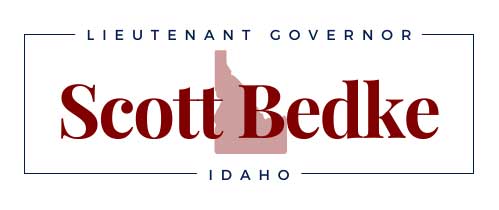Governor’s Water Summit reveals success stories, challenges in looking at surface and ground water statewide
Thursday August 10, 2023Boise, ID – Governor Brad Little and other Idaho leaders are applauding the success of the first Water Summit of the Governor’s administration, which took place Monday in the Idaho Capitol.
Governor Little, Lt. Governor Scott Bedke, and Idaho Water Resource Board Chairman Jeff Raybould gave the audience a strategic look into the status of the state’s precious water resources during the Governor’s Water Summit.
“Idaho must maintain our water sovereignty and not turn out like California or Colorado, where the federal government stepped in to address their water supply problems. Our historic investments in water since I took office just under five years ago are setting us up for success, but we have a lot of work to do. I appreciate all the participants in our first Water Summit for their dedication to working together to create Idaho solutions to Idaho’s water supply,” Governor Little said. “Our policies in Idaho demonstrate that we are true conservationists. People are moving here because of what Idaho looks like, and how we manage water is going to be incredibly important going forward.”
Meeting in front of a full house of approximately 250 people in the Idaho State Capitol Lincoln Auditorium, including numerous state legislators and hundreds online, Governor Little and Lt. Governor Bedke heard about many challenges facing the state’s groundwater resources where they are in decline. The Palouse-Basin Aquifer, the Mountain Home Aquifer, and the Eastern Snake Plain Aquifer (ESPA) were all highlighted in that discussion.
Governor Little noted that about $1 billion has been recommended and approved by the Idaho Legislature for water infrastructure projects since he took office. Through his “Leading Idaho” and “Idaho First” plans, the Idaho Water Resource Board (IWRB) has received $450 million to modernize the state’s water infrastructure statewide through grants, loans, and strategic investments in water sustainability projects.
The state’s historic investment in modern water infrastructure will help stretch water supplies with efficiency savings and water quality improvements, the Governor said. Some funds are going to water projects that restore aquifer stability and provide for sustainable water use, Raybould noted.
“Sustainability is our watchword,” Lt. Governor Bedke said. “This is all about making sure we have adequate water supplies for Idaho’s future. Our future success is dependent on water.”
On the positive side, the water supply in the state’s most populous region, the Treasure Valley, is stable, officials said. Lining six miles of the New York Canal utilizing local, state, and federal funding is expected to save approximately 29,000 acre-feet of water per year – the equivalent of flooding 29,000 acres of land to the depth of one foot. Officials also heard about water-conservation efforts in the Avimor community, north of Eagle, that are cutting residential water use in half.
Idaho also is a national leader in Cloud Seeding efforts that increase snowfall and mountain snowpack in the winter. Idaho’s Collaborative Cloud Seeding Program involving Idaho Power Co., IWRB, and water users has added an average of 1.2 million acre-feet of water supply per year in the Upper Snake, Boise, and the Big Wood and Payette River basins, Idaho Power officials said.
Being among the fastest-growing states in America adds to the state’s water challenges, Raybould said. “Clearly, we’ve been discovered,” he said. “That creates even more challenges for us, especially with water supply and infrastructure. We need to make sure we conserve our water resources the best we can while operating within the bounds of the Prior Appropriation Doctrine.”
Raybould refers to Idaho water law, which gives priority to water users who have the most senior rights or, first in time, first in right.
While tension between senior and junior users has been intense in places like the Wood River Valley and Eastern Snake Plain, the tone between water users was civil throughout the day at the Governor’s Water Summit. Case studies of water issues in Idaho communities showed a broad diversity of water users are working together to solve problems.
More discussions and regional meetings may be held in the future to discuss water topics, Governor Little said.
“This is just a starting point in the discussions we need to have. This is not about new policies but managing our resources in the best way we can. We are the true conservationists,” he said.
Overall, Little said the state’s water management should ensure:
- A sustainable water supply for urban and rural users
- Water quality is being improved on an ongoing basis
- Idaho’s sovereignty over its water resources is maintained at all times
The agenda, meeting materials, attendance summary and video of the summit are available at https://idwr.idaho.gov/iwrb/meetings/board-meeting-materials/.

